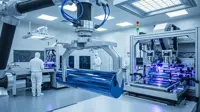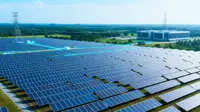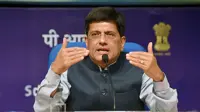Pumping fuel in ecobot
11 Nov 2013
A new device that may be capable of pumping human waste into the 'engine room' of a self-sustaining robot has been created by a group of researchers from the Centre for Fine Print Research at the University of the West of England (UWE Bristol) and the Bristol Robotics Laboratory (BRL).
 Modelled on the human heart, the artificial device incorporates smart materials called shape memory alloys and could be used to deliver human urine to power future generations of EcoBot – a robot that can function completely on its own by collecting waste and converting it into electricity.
Modelled on the human heart, the artificial device incorporates smart materials called shape memory alloys and could be used to deliver human urine to power future generations of EcoBot – a robot that can function completely on its own by collecting waste and converting it into electricity.
The device has been tested and the results were presented on 8 November in IOP Publishing's journal Bioinspiration and Biomimetics.
Researchers based at the Bristol Robotics Laboratory – a joint venture between the UWE Bristol and the University of Bristol – have created four generations of EcoBots in the past 10 years, each of which is powered by electricity-generating microbial fuel cells that employ live microorganisms to digest waste organic matter and generate low-level power.
In the future, it is believed that EcoBots could be deployed as monitors in areas where there may be dangerous levels of pollution, or indeed dangerous predators, so that little human maintenance is needed. It has already been shown that these types of robots can generate their energy from rotten fruit and vegetables, dead flies, waste water, sludge and human urine.
This same technology is being employed to power the artificial heart. Essentially microbial fuel cells (MFCs) are bio-electrochemical transducers that convert the energy found in organic matter, to electricity. Live microorganisms that inhabit the inside of MFCs, metabolise the organic fuel - urine and this produces electricity as a by-product, along with carbon dioxide.
Lead author of the study Peter Walters, from the Centre for Fine Print Research, said, ''We speculate that in the future, urine-powered EcoBots could perform environmental monitoring tasks such as measuring temperature, humidity and waste water quality. A number of EcoBots could also function as a mobile, distributed sensor network.
''In the city environment, they could re-charge using urine from urinals in public lavatories. In rural environments, liquid waste effluent could be collected from farms.''
At the moment conventional motor pumps are used to deliver liquid feedstock to the EcoBot's fuel cells; however, they are prone to mechanical failure and blockages.
The new device, which has an internal volume of 24.5 ml, works in a similar fashion to the human heart by compressing the body of the pump and forcing the liquid out. This was achieved using 'artificial muscles' made from shape memory alloys – a group of smart materials that are able to 'remember' their original shape.
When heated with an electric current, the artificial muscles compressed a soft region in the centre of the heart-pump causing the fluid to be ejected through an outlet and pumped to a height that would be sufficient to deliver fluid to an EcoBot's fuel cells. The artificial muscles then cooled and returned to their original shape when the electric current was removed, causing the heart-pump to relax and prompting fluid from a reservoir to be drawn in for the next cycle.
A stack of 24 microbial fuel cells fed on urine were able to generate enough electricity to charge a capacitor. The energy stored in the capacitor was then used to start another cycle of pumping from the artificial heart.
''The artificial heartbeat is mechanically simpler than a conventional electric motor-driven pump by virtue of the fact that it employs artificial muscle fibres to create the pumping action, rather than an electric motor, which is by comparison a more complex mechanical assembly,'' continued Walters.
The group's future research will focus on improving the efficiency of the device, and investigating how it might be incorporated into the next generation of MFC-powered robots.
(Also see: Scientists on way to creating urine-driven robot)






















